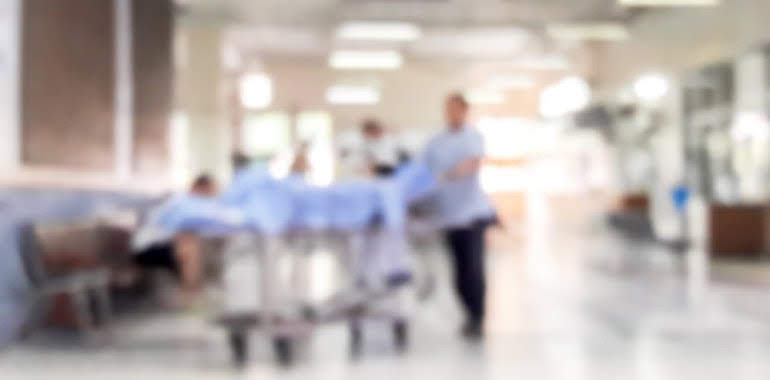It was a year ago that Rishi Sunak tried to regain public trust in the government’s running of England’s NHS by promising to open an extra 5,000 “sustainable” front line beds and 800 new ambulances … backed by “a dedicated £1 billion fund.”
He promised this would deliver “the largest and fastest-ever improvement in emergency waiting times in theNHS’s history”.
Of course, the reality has proved very different.
Despite an 11% fall in numbers of emergency admissions compared with 2022, the year to December saw a hefty 13% jump in numbers of people waiting over 12-hours on trolleys – to almost 420,000, averaging almost 44,000 per month in October, November and December.
January has seen things get even worse, with a succession of hospitals in various parts of England declaring “critical incidents” – or witnessing disastrous delays for lack of capacity.
Significantly only a few these were days on which staff were engaged in industrial action: the problem is straightforward lack of capacity to deal with winter pressures.
Portsmouth’s Queen Alexandra Hospital, which first declared a critical incident during the doctors’ strike early in January, was still in the throes of the same incident three weeks later, long after the strikes were over. A statement to the local press explains:
“We remain in critical incident as we have a high number of very unwell patients needing care and limited ability to discharge patients home or to ongoing care. This means we have a shortage of spaces to care for people. This is also leading to ambulance delays …”
In Nottingham and Nottinghamshire, too a ‘critical incident,’ which was controversially announced by the Integrated Care Board (ICB) during the doctors’ strike in early January, ran on well after the strike with Sherwood Forest Hospital Trust confirming it was still in place on January 10:
“Although staffing levels have now improved, the system remains under severe pressure, and we are not yet in a position to remove the critical incident status. The increased demand is due to a number of factors, particularly the number of people presenting with seasonal and respiratory illnesses such as flu and Covid.”
In mid January the Dudley hospitals trust also declared a critical incident – for lack of beds.
On January 24, weeks after the strikes, the Leicester, Leicestershire and Rutland ICB declared a critical incident “to help protect patient safety due to significant pressures on local services.” This came as around 200 people were waiting for care in A&E, with 10 ambulances waiting to hand over patients at Leicester Royal Infirmary.
On January 25 three neighbouring hospitals in the south east midlands – Northampton, Kettering and Milton Keynes – all revealed crisis conditions, despite Milton Keynes having opened more than 100 extra ‘escalation beds and ‘additional ward space’ to deal with emergency admissions.
Northampton’s beds were at 100% capacity, with 52 patients on trolleys waiting for beds, and the longest wait a massive 35 hours. Kettering had patients waiting up to 30 hours for a bed and ambulances were taking up to 4 hours to hand over emergency patients.
Plymouth’s Derriford Hospital revealed on January 26 it was into a fifth day of an incident, with bed occupancy running at 105%, 100 patients waiting in A&E – and one patient having waited 44 hours for a bed.
Hospital services in Torbay and in Cornwall (Truro) were also under pressure, with the BBC reporting “Royal Cornwall Hospital in Truro, Plymouth’s Derriford Hospital and Torbay Hospital were rated one, two and three respectively for ambulance queuing,” according to NHS England data. Almost nine out of ten (87%) of patients arriving at Royal Cornwall Hospital by ambulance waited longer than 30 minutes to be handed over from paramedics to A&E, 81% at Derriford and 67% waited 30 minutes or longer at Torbay Hospital.
Meanwhile in many areas services were also running under severe pressure without any formal announcement, including Oxford University Hospitals, where GP Helen Salisbury reported on X/Twitter on January 26:
“A long row of patients on trolleys in a corridor. Ambulance paramedics looking after them and three more patients still in ambulances outside, but no place to put them. … They were on trolleys because the hospital had no (0) empty beds. None on the wards, none in the ED.”
Statistics show the widespread problem of front-line capacity under massive strain.
On January 21 an average of 94% of England’s 103,000 available general and acute beds were occupied: but in four trusts beds were 100% occupied (North Middlesex Hospital, Walsall, Wrightington, Wigan and Leigh, and Wye Valley (Hereford).
Seven more trusts were on 99% occupancy (North Bristol, Swindon’s Great Western, George Eliot Nuneaton, Queen Elizabeth, Kings Lynn, and three in London (Whittington, Lewisham & Greenwich, and Croydon).
More than half of 132 hospitals with general and acute beds had occupancy of 95% or more – leaving them always on the brink of crisis.
In London the lack of beds for patients with the most serious and urgent need meant that in December an average of one in eight patients needing emergency admission was forced to wait over 12 hours on a trolley – including more than one in five (22.5%) waiting longer than 12 hours in Hillingdon Hospital.
The NHS Confederation has warned that the numbers of delays in ambulance handovers have increased to almost one in three, compared with one in five in the same period last year, with NHS beds clogged up with an increased number of patients who should be discharged, but can’t be for lack of community services and social care to support them:
“Some 14,436 beds each day were filled with patients no longer meeting the criteria to reside in hospital on average last week, up 5.9% from 13,637 the previous week. At the same time last year this was 13,566.”
So what happened to the promised extra beds?

NHS England, providing PR cover for ministers, chose January 25, in the midst of critical incidents, to publish a self-congratulatory press release claiming: “NHS delivers on ambition of 5,000 more permanent beds”.
How do they argue this? They now claim that the increased number of beds was not from the 100,046 general and acute beds open when the promise was made, but “against a baseline of 94,500, the original level of core beds planned by NHS trusts in 2022/23.”
So now, despite the total number of ‘core’ and temporary (escalation) beds open on January 21 being just 102,753 – only 2,700 more than the actual number open a year ago – NHS England and ministers can claim an ‘increase of 5,000’.
All the while of course the evidence on the ground screams out that even this “expanded” capacity is still nowhere near enough to cope with demand, meet performance targets for A&E, or reduce the 7.6 million waiting list.
_______________________
* It’s not only the bed numbers that have not been increased as promised: the other big promise from government and NHS England was a roll-out of same day emergency services, to speed treatment and discharge and minimise the use of precious beds.
A month ago The Lowdown pointed out that a third of the 118 trusts were delivering a smaller proportion of emergency care in this way than they were a year ago.
Now the HSJ has revealed that management at Whipps Cross Hospital in North East London (managed by the giant Barts Health trust) have twice come close to closing the same day emergency service they only opened in December.
The key issue in each case has been staffing levels in the main Emergency Department, exacerbated by a dispute over pay rates for locum staff in the same day unit – which appears to consist of 16 chairs.
It seems that whatever the rhetoric at national level, for local NHS bosses ‘same day emergency care’ is a fairly small-scale and optional sideshow compared with the challenge to maintain core emergency services.
Dear Reader,
If you like our content please support our campaigning journalism to protect health care for all.
Our goal is to inform people, hold our politicians to account and help to build change through evidence based ideas.
Everyone should have access to comprehensive healthcare, but our NHS needs support. You can help us to continue to counter bad policy, battle neglect of the NHS and correct dangerous mis-infomation.
Supporters of the NHS are crucial in sustaining our health service and with your help we will be able to engage more people in securing its future.
Please donate to help support our campaigning NHS research and journalism.


